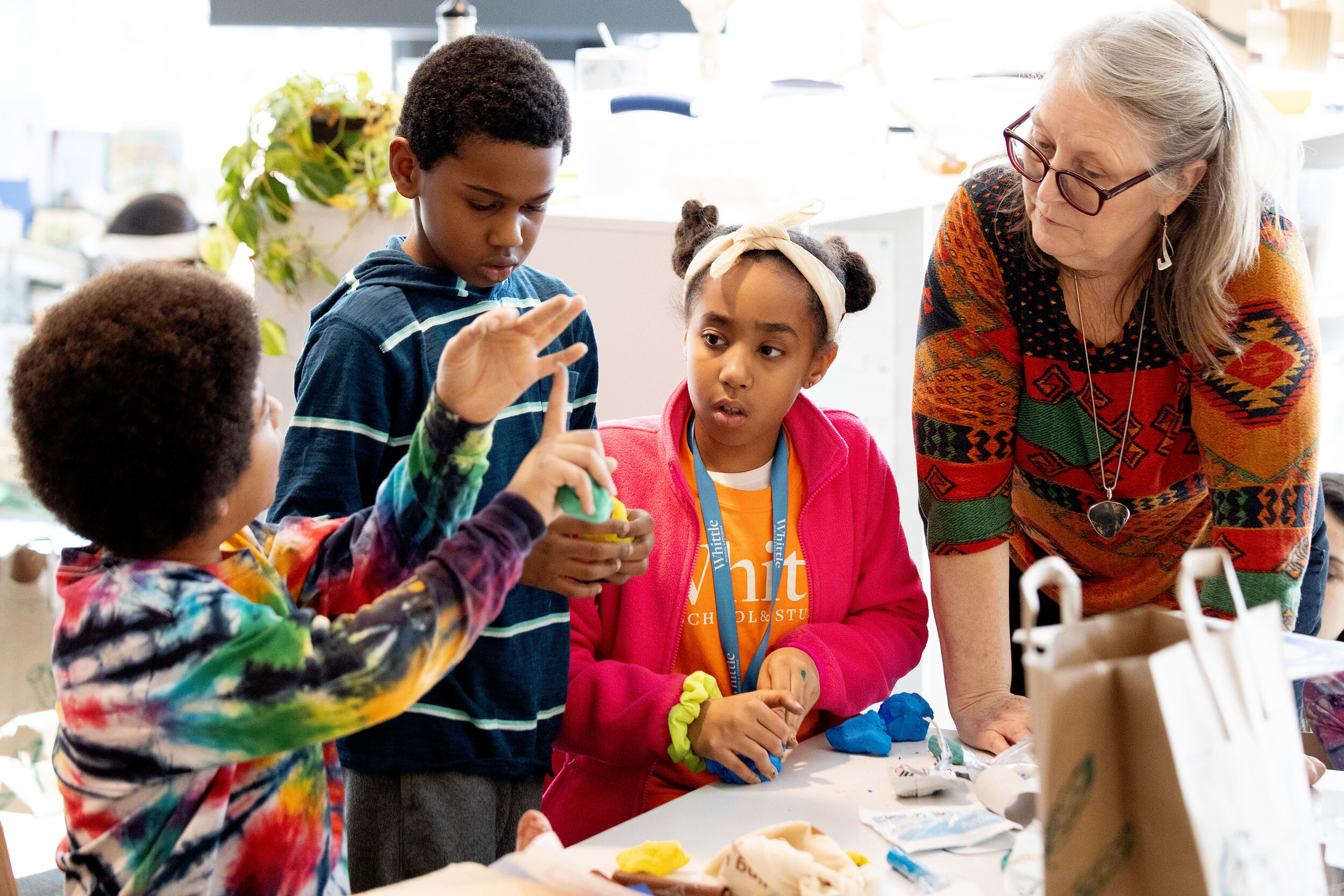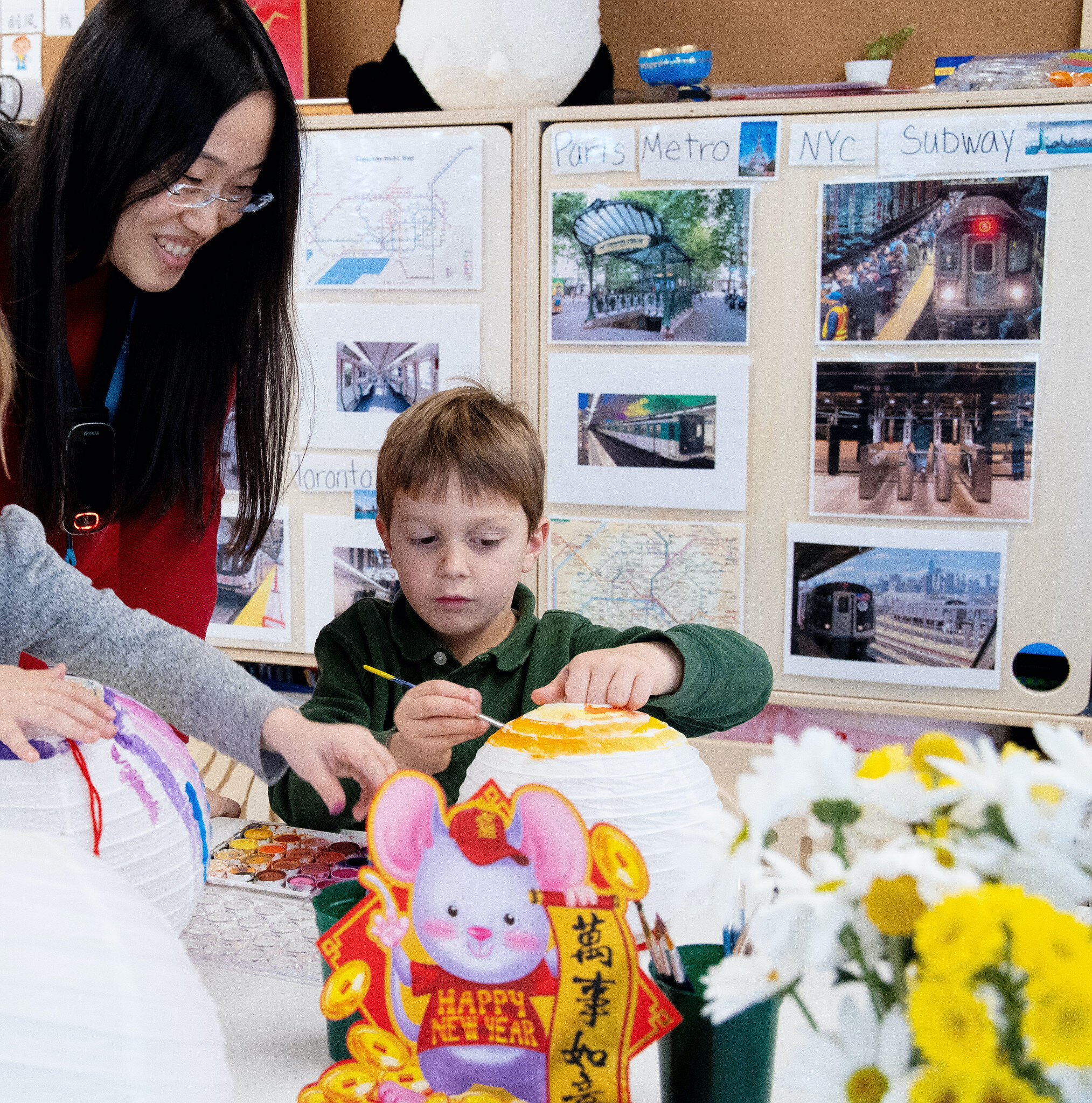

Creative Arts & Design
The Creative Arts & Design (CAD) program will develop and engage artists across all grades at Whittle School & Studios through creative investigations implementing the CAD creative and design thinking process. Artistic exemplars and resources involving local, global, contemporary, and historical examples, along with social and environmental concerns, will be explored with students. Students will innovate through 2D, 3D, digital forms, and maker materials. Artists will respond to stimulus, thought-provoking questions, ideas, or a theme in connection by which students sense and relate their world of self, knowledge, and humanity through art. Freedom to risk-take and fail forward with materials will be embraced to develop resilience.
Program Overview
Early Learning Center and Lower School
In the Early Learning Center, students will explore and experience Reggio-inspired polysensory provocations to spark inquiry and curiosity using all five senses (see, hear, taste, touch and smell). They will learn to develop relationships from these discoveries.
Lower School Creative Arts and Design curricula allows students opportunities to sense and relate a wide range of materials, techniques, and pictorial concepts from around the world and to the core principles of design thinking. CAD periods will often be used for student-centered work that connects to interdisciplinary STEM and humanities projects and X-Days. Assessments will be given to promote artistic growth, check for personal understanding, and to develop self-awareness of the Project Zero Studio Habits of Mind.
Through the CAD program, students will develop the skills to present and exhibit their art and its process in the piazza, the neighborhood, and city.
CAD students will be guided towards identifying, synthesizing, participating in real art world experiences, through portfolio creation, art presentation, various modes of exhibition design, curating exhibits, documenting processes, writing artist statements, and museum/gallery docenting.
Middle School and Upper School
The Middle School Creative Arts and Design curricula introduces students to a wide range of materials, techniques, and pictorial concepts from around the world, and to the core principles of design thinking. CAD periods will often be used for student-centered work that align to interdisciplinary STEM and humanities projects.
The Upper School Creative Arts and Design periods provide space and time to allow students to choose their own materials and multimedia resources to build projects that align to interdisciplinary STEM and humanities projects, and to electives, X-Day trips, and Centers of Excellence portfolio project work.
The CAD program for grades 6-12 is designed through three artistic lenses: Sense, Regard, and Relate.
These broad lenses will frame contemporary themes as students experience the variety of disciplines offered by CAD. While each of the three lenses is explored more deeply throughout each trimester, they also serve as core artistic principles that will be utilized throughout the year.
Sense will be utilized in multiple ways throughout the first trimester. Utilizing sensory experiences at the start of each school year, students will play with materials and experiment with concepts on a more experiential level. Sense refers not only to the five primary senses, but also includes the opportunity to explore senses of sensitivity, feelings, awareness, consciousness, and perception.
Regard builds our skills in perception and perspective, asking students to take a step back and look more closely. Regard is how one might view, observe, or contemplate a situation, place, person or thing, and it also refers to how people evaluate, assess, or gauge the world around them. Regard promotes the possibility of engaging in mindfulness by giving respect or appreciation through the act of making.
Relate encourages synthesis of prior ideas uncovered throughout the year and used to build relationships across seemingly disparate or disconnected areas of thought or ways of making. In addition to forming connections, relate promotes empathy and fosters the possibility of forming new relationships with others through the act of creating and sharing through exhibitions and performances.

“My hope is that our artists will use their experience in Creative Arts & Design to learn formal and conceptual skills, along with empathy, to create a visual voice to make an impact on human behavior for a more sustainable future.”














